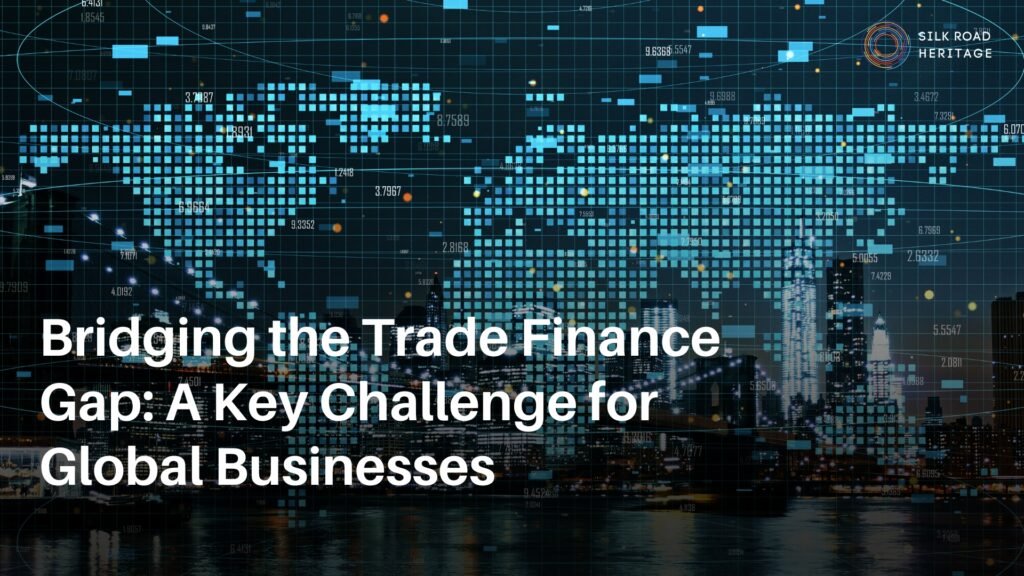Bridging the Trade Finance Gap: A Key Challenge for Global Businesses

13/12/2024
Trade finance is a vital catalyst for international trade, enabling businesses of all sizes to engage in cross-border transactions smoothly and efficiently. However, despite its critical role, a significant trade finance gap has been a persistent challenge, especially for small and medium-sized enterprises (SMEs) and those operating in emerging markets. In this article, we explore the trade finance gap, its implications, and potential solutions to address this pressing issue. The current trade finance gap is estimated to be around $1.5 trillion. This means that there is a significant amount of demand for trade finance that is not being met. The gap is particularly large for SMEs and businesses in emerging markets.
Understanding the Trade Finance Gap:
The trade finance gap refers to the disparity between the demand for trade finance and the availability of financial instruments to facilitate international trade. Businesses often face challenges in obtaining adequate funding to finance their import and export activities, resulting in delayed shipments, lost opportunities, and constrained growth prospects.
Reasons for the Trade Finance Gap:
Risk Perception: International trade transactions involve inherent risks, such as political, economic, and regulatory uncertainties in foreign markets. Many financial institutions are risk-averse, particularly when dealing with SMEs or lesser-known markets, leading to reduced access to trade finance.
Compliance and Documentation: Trade finance often involves a complex web of documentation and compliance requirements. SMEs and businesses in emerging markets may lack the resources and expertise to navigate these complexities, making it harder to secure trade finance from traditional lenders.
Regulatory Constraints: Stricter global regulations following the 2008 financial crisis have compelled financial institutions to adopt more stringent risk management practices, limiting their willingness to engage in trade finance, especially with new or riskier clients.
Implications of the Trade Finance Gap:
The trade finance gap can have far-reaching consequences on global trade and economic growth:
Hampered Trade Growth: Limited access to trade finance impedes the ability of businesses to expand into new markets and hampers their ability to fulfill international contracts, restraining global trade growth.
Impact on SMEs: SMEs, which form the backbone of many economies, are disproportionately affected by the trade finance gap, hindering their ability to participate in global trade and seize growth opportunities.
Inequality: Uneven access to trade finance can widen the economic divide between developed and emerging economies, as well as between large corporations and smaller enterprises.
Addressing the Trade Finance Gap:
To bridge the trade finance gap and foster inclusive global trade, various stakeholders must collaborate on comprehensive solutions:
Digitalization: Embracing digital technologies can streamline trade finance processes, reduce documentation burdens, and enhance efficiency, making trade finance more accessible to a broader range of businesses.
Risk Mitigation: Developing risk-sharing mechanisms, credit enhancement facilities, and public-private partnerships can encourage financial institutions to extend trade finance to riskier markets and clients.
Capacity Building: Providing training and support to SMEs and businesses in emerging markets can improve their understanding of trade finance requirements and enhance their creditworthiness, increasing their access to finance.
Policy Support: Governments and international organizations can play a crucial role by promoting supportive trade finance policies, reducing trade barriers, and facilitating access to finance for SMEs.
Finally, it is important to raise awareness of the trade finance gap. This would help businesses to understand the importance of trade finance and to know where to get help if they need it.
The trade finance gap is a significant problem for businesses, but there are a number of things that can be done to close it. By providing more trade finance, developing new trade finance products and services, and raising awareness of the trade finance gap, we can help businesses to trade more easily and grow their businesses.
Here are some of the latest developments in the trade finance space:
The World Trade Organization (WTO) has launched a new initiative to address the trade finance gap. The initiative is called the Trade Finance Facilitation Framework, and it aims to help businesses access trade finance more easily.
The Asian Development Bank (ADB) has launched a new trade finance program called the Trade Finance Program for SMEs. The program is designed to help SMEs in developing countries access trade finance.
The International Chamber of Commerce (ICC) has launched a new trade finance tool called the ICC Trade Finance Index. The index is designed to measure the availability of trade finance in different countries.
The trade finance gap remains a significant obstacle to global trade and economic growth. Addressing this challenge requires collective efforts from governments, financial institutions, technology providers, and businesses. By fostering innovation, risk-sharing, and capacity building, we can unlock the potential of international trade and create a more inclusive and prosperous global economy.
Silk Road Heritage is a boutique financial and business consulting firm based in the vibrant city of Dubai with branches in Italy and Switzerland.
- 2024 SilkRoadHeritage. All rights reserved.

